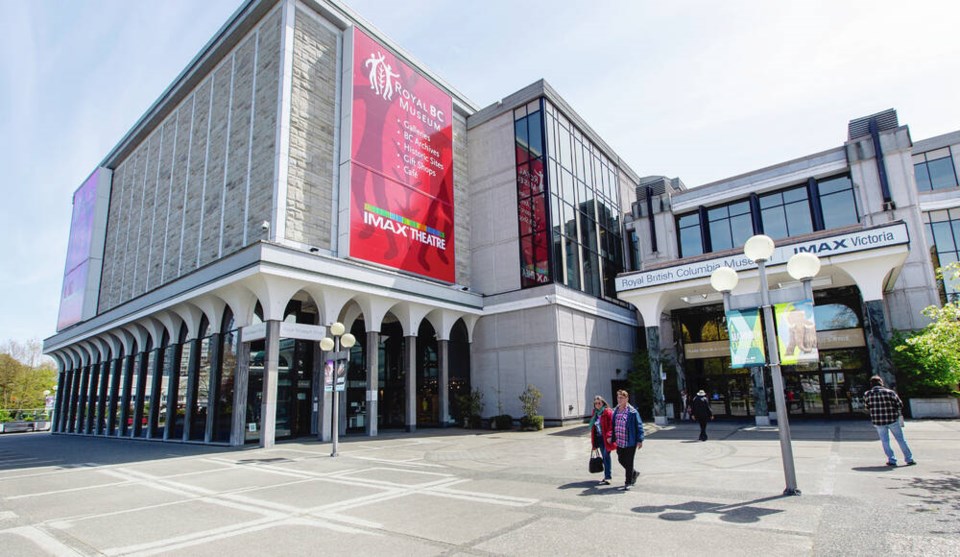If it all goes well, the replacement of the Royal B.C. Museum will stay on schedule and budget and the powder-keg arguments about decolonization and cancel culture will be resolved without too many explosions.
A gorgeous new facility will take shape and function like the old one used to, as a must-see destination where lifetime family memories are made.
If it doesn’t, Friday’s announcement will go down in history as an ambitious rendering of hopes and dreams that didn’t pan out.
Everyone in this city should hope it goes well and do what they can to make it succeed, because there is a lot at stake. If there’s one project where Victoria’s track record of arguing everything to death needs to stop, it’s this one.
But if there’s one project likely to start prolonged spats about history, culture, artistic vision and money, it’s a new museum. One thing to be recognized at the outset: It is proposed as a monument to Indigenous reconciliation, and also an effort to rebound from serious problems. The RBCM ran relatively quietly for decades, but the last few years have not gone well.
Apart from the fact that the pandemic tanked attendance and revenue, a profoundly troubling story about workplace culture emerged. The former CEO was forced out after a damning internal report about institutionalized racism and employee bullying. The institution had to acknowledge “fear and mistrust” among staff and felt compelled to issue an apology.
The soul-searching extended beyond the employees and into the exhibits as well.
Officials concluded that some exhibits were outdated and focused too much on the European colonial past. That prompted a rushed makeup effort that involved shutting down the Old Town exhibit, logging and fishing displays and replica displays of Capt. George 91原创’s ship, Discovery.
When a groundswell of protests developed over the closing of those features, the government started changing the story on the fly.
Tourism Minister Melanie Mark wrote a column in this paper that dropped any mention of decolonization. She cited seismic risks, asbestos hazards and poor accessibility and broadened the scope of the challenges.
“Sadly, the facilities are at the end of their useful life.”
That’s debatable, given that the adjacent Parliament Buildings and Empress Hotel face the same site challenges and are far older. There are lots of circa-1967 buildings (the museum is from that era) still functional. The grounds for the key decision about renovating versus completely rebuilding are not clear yet. Premier John Horgan said there have been a number of studies and officials concluded a rebuild is best for the long-term.
But it comes with a major downside, a hole in the downtown economy that will last more than seven years.
The permanent shutdown will happen Sept. 6 of the museum proper. It will be a busy construction site for the next seven years and is expected to reopen in 2030.
Officials said there will be pop-up studios and travelling displays, but the prolonged loss is unavoidable. Construction budgets and timelines have never been more tenuous than they are these days and there was a lot of stress about how complex the job of moving seven million artifacts and 27 kilometres of documents will be.
The emphasis on Friday was the Indigenous reconciliation effort that is driving this project as much as the building’s deficiencies are. Marks, who is the first First Nations women ever elected to the legislature, grew emotional at finding herself minister responsible for such a highly-visible symbol of that commitment to reconciling past wrongs.
An Indigenous woman cabinet minister in partnership with First Nations has a chance to transform a building on their territory, she said. “To me that is reconciliation in action.”
Just So You Know: Question: “Is the Old Town exhibit gone for good?”
Horgan (condensed): “It’s never been about erasing history. I’m a student of history. … For those who are passionate about the museum and having that ability to be changing all the time, not in a way of saying we’re closing the door on that chapter … we’re looking at that chapter in a different way.
“Will components of Old Town be there? Certainly the story will be.”
• To comment on this article, write a letter to the editor: [email protected]




